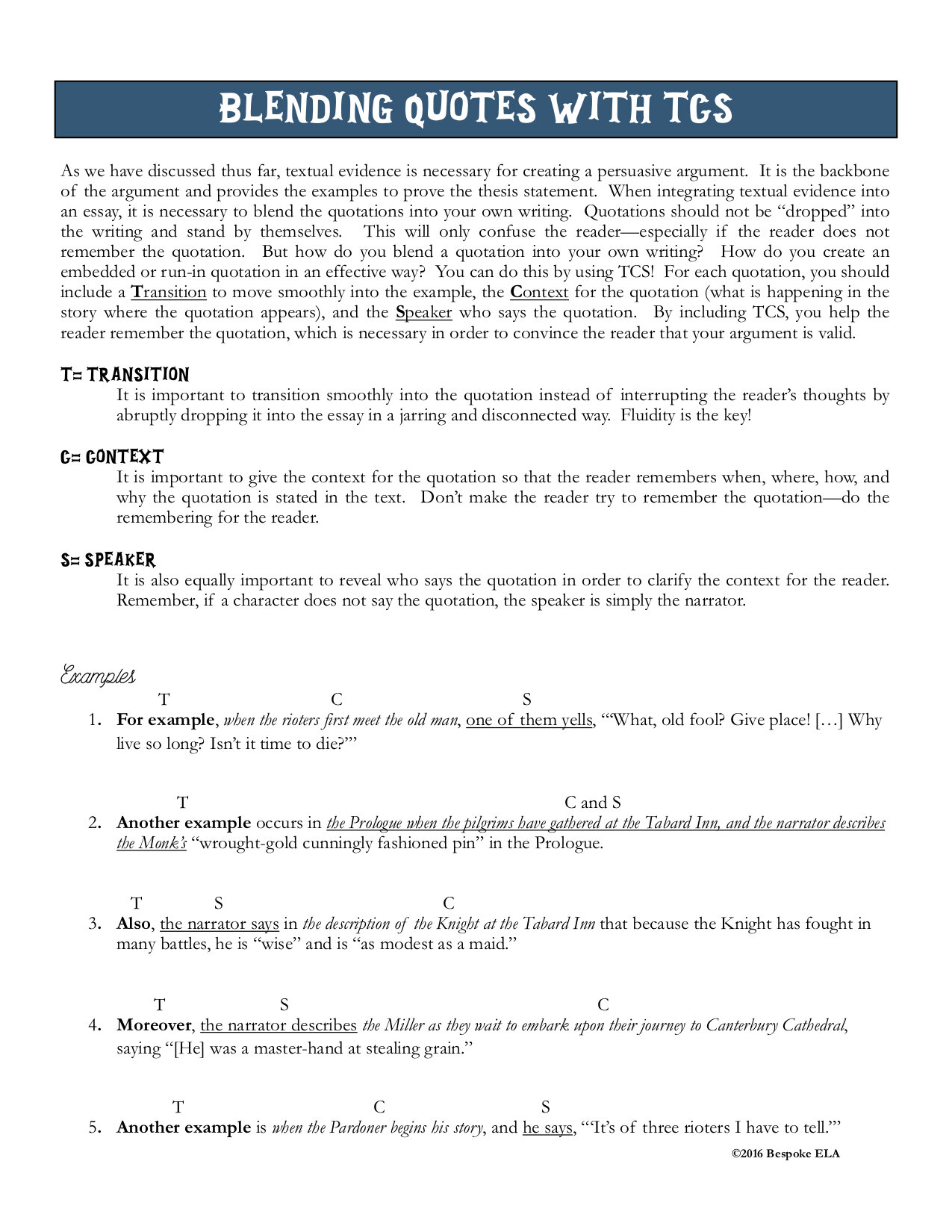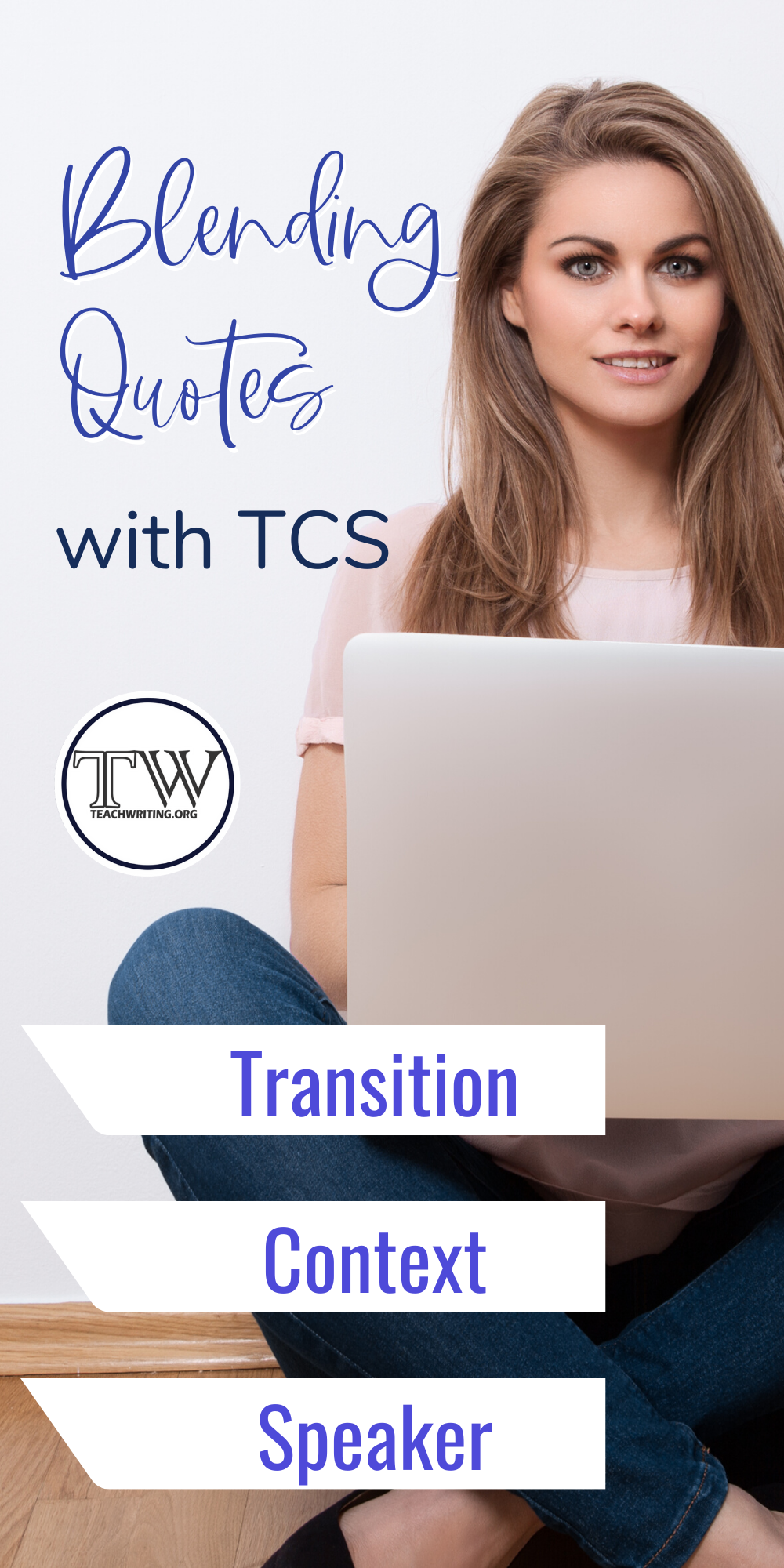Blending Quotes with TCS: A Strategy for Essay Writing Success!
Blending textual evidence into writing is a key skill for writing any academic essay. But year after year, I find that high school students still struggle with this skill, creating run-on sentences or fragments instead of complete sentences with their evidence. I also find that students can sometimes be confused about where to place the blending stem and how to smoothly transition into the quotations.
Because of this confusion, I developed a quick strategy called the “TCS Strategy for Quote Blending” to help students quickly and effectively blend evidence into essay writing. You can find more about this strategy in the Blending Quotes for ESSAY WRITING with TCS (Transition, Context, Speaker) Guide found here.
Here’s how it works!
T = Transition
The first step in this process for essay writing is to begin a sentence with a transition word or phrase in order to segue smoothly into the textual evidence.
Here are some transition options:
For example,
In the story,
For instance,
First of all,
C= Context
After the transitional device, the next step is to include a “when” statement to provide plot context for the place in the text where the quotation occurs. This is the only place in the text where plot needs to be addressed. Students must always assume that the reader (us) knows the story and that we do not need a summary.
Here are some examples of T + C:
For example, when Macbeth goes to murder the king…
In the story, when Lady Macbeth receives the letter from Macbeth about the witches’ prophecy…
For instance, when Macbeth orders the murder of Banquo and his son…
S = Speaker
The next step in the process is to add in the person who says the quotation. If a character is not speaking, then the speaker is simply the “narrator” or the “speaker.” After the TCS, the student adds in the quotation followed by commentary/ analysis.
Here are some examples of TCS with quotations:
For example, when Macbeth goes to murder the king, he says, “quote.”
In the story, when Lady Macbeth receives the letter from Macbeth about the witches’ prophecy, she says, “quote.”
For instance, when Macbeth orders the murder of Banquo and his son, he says, “quote.”
There are other ways to go about blending textual evidence into writing, but the TCS strategy is accessible for students across levels and helps them blend quotations easily and effectively. Check out the Bespoke ELA guide for Blending Quotes for ESSAY WRITING with TCS (Transition, Context, Speaker).
What strategies do you use for blending textual evidence? Leave us a comment below! We’d love to hear from you!
Related Resource
About the Author
Meredith is the founder and creator of TeachWriting.org and Bespoke ELA. She has taught high school English for 10+ years in Dallas, Chicago, and New York City and holds a M.A. in Literature from Northwestern University. She has always had a connection to the written word-- through songwriting, screenplay writing, and essay writing-- and she enjoys the process of teaching students how to express their ideas. Meredith enjoys life with her husband, daughter, and sweet pups.





